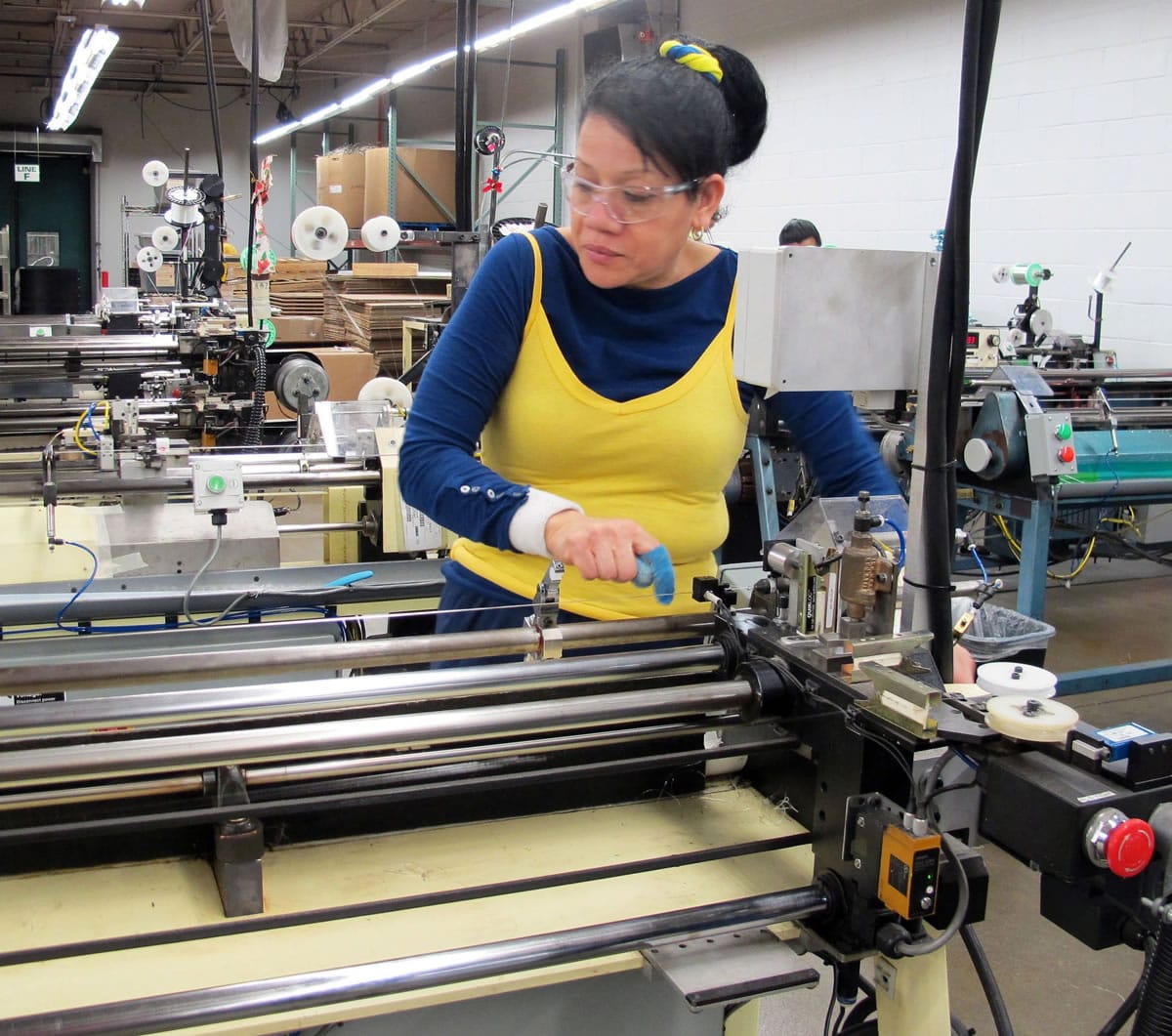FARMINGDALE, N.Y. — The economy is firming, hiring is on an upswing and consumers appear inclined to spend.
That’s good news for D’Addario & Co., a U.S. firm that manufactures the strings found on all sorts of musical instruments, from cellos to electric guitars.
Like many U.S. manufacturers, it’s still trying to make up for ground lost during the Great Recession. It’s doing so in part by investing in technology that makes it lean, boosting output with fewer workers and smarter production.
“We’re not all the way back yet. We’re probably about 85 percent back” to pre-recession levels, said Rick Drumm, co-president of D’Addario in Farmingdale, on New York’s Long Island.
“The entire music products industry, $7.5 billion in the United States, really has not had any growth in 10 years plus, when adjusted for inflation,” he said.
Indeed, even with recovery, the overall manufacturing sector is at best about three-quarters of the way back, less so when tech products such as semiconductors are taken out of the mix. At a contemporary peak, manufacturing represented about 21 percent of the U.S. economy in 1980. Today, it’s closer to 12 percent, and the sector employs about 12 million workers.
“The general economy fell only 4 percentage points in the recession, but manufacturing fell (almost) 20 percent,” said Daniel Meckstroth, chief economist for the Manufacturers Alliance for Productivity and Innovation, an industry research group. “Obviously it’s going to grow faster because it went into a deeper hole, but it’s got more to make up.”
The long slog back is reflected in hiring numbers.
The sector lost more than 2 million jobs, or 15 percent of the manufacturing workforce, from December 2007 to June 2009 — a period spanning the Great Recession. The job losses continued beyond the official end of the recession, and at the end of 2009 the sector had its lowest employment level since 1941.
The sector has gained a little more than half a million new jobs since February 2010. That would be good in normal times. These aren’t normal times.
A key reason is that manufacturers are rebounding in part thanks to greater productivity, getting more output from fewer workers.
“We’ve added 543,000 workers since the end of recession. My gut reaction is many of those people are different than the people they might have replaced,” said Chad Moutray, chief economist for the National Association of Manufacturers. “Because they are so much more skilled and manufacturing is much more advanced than it used to be, it further serves to increase those productivity gains.”
It helps to explain why recovery in hiring for manufacturers has been in fits and starts and remains well below pre-recession levels.
“It’s not like everything is great in manufacturing. It’s recovering. Demand is picking up. We’re trying to get to recovery of the previous cyclical peak and get on a growth path,” said Meckstroth. “First you’ve got to recover from what you lost.”



